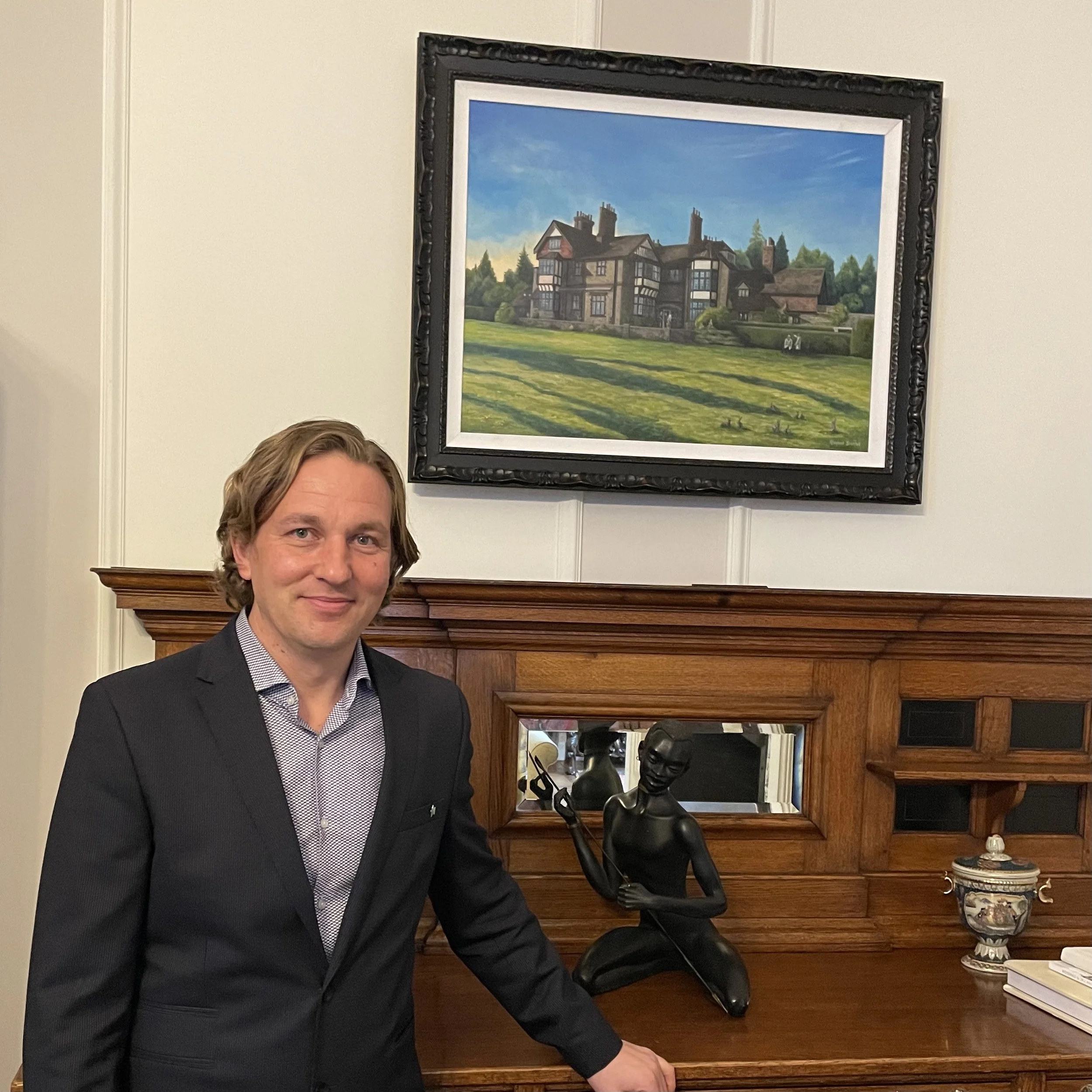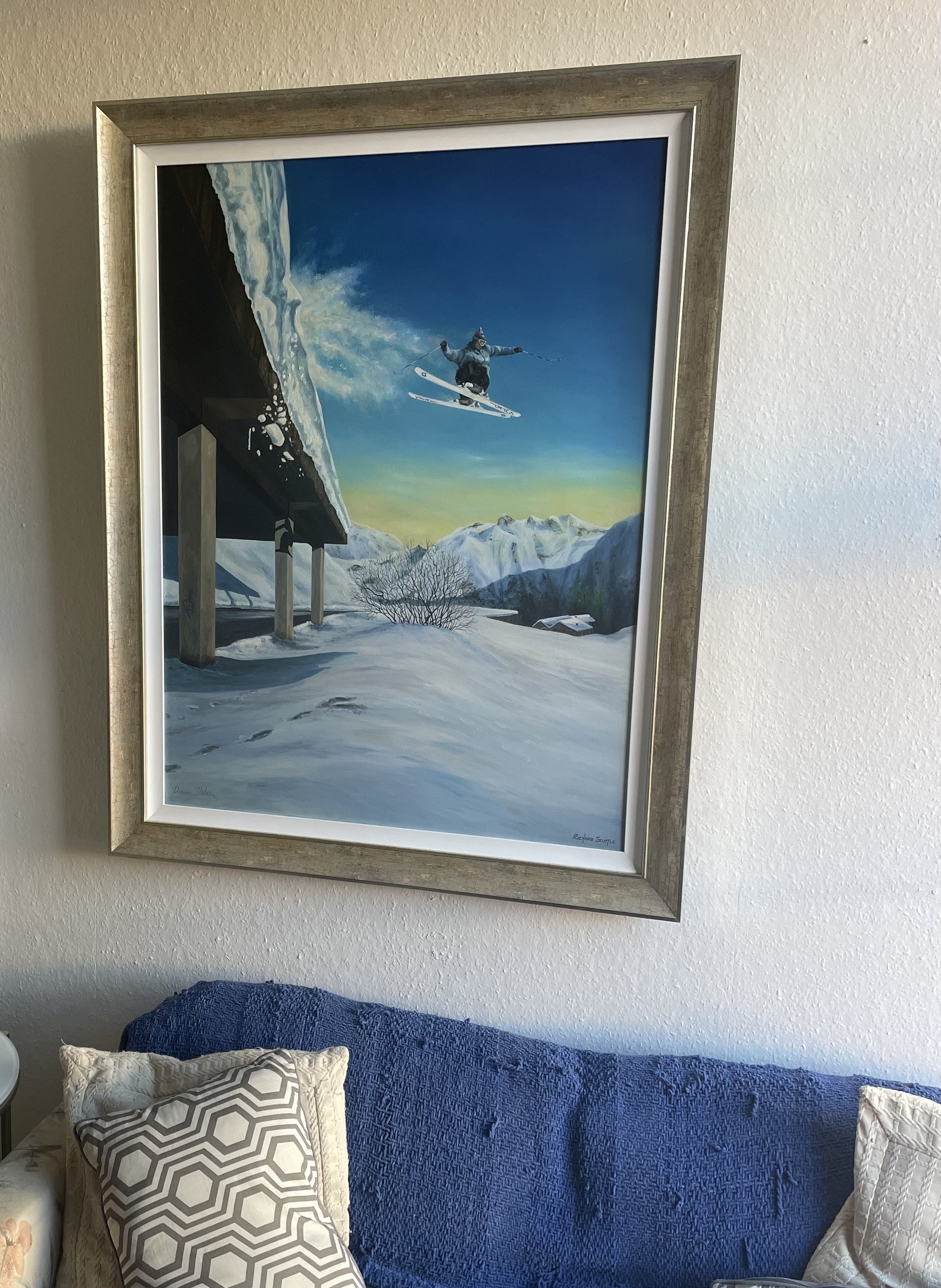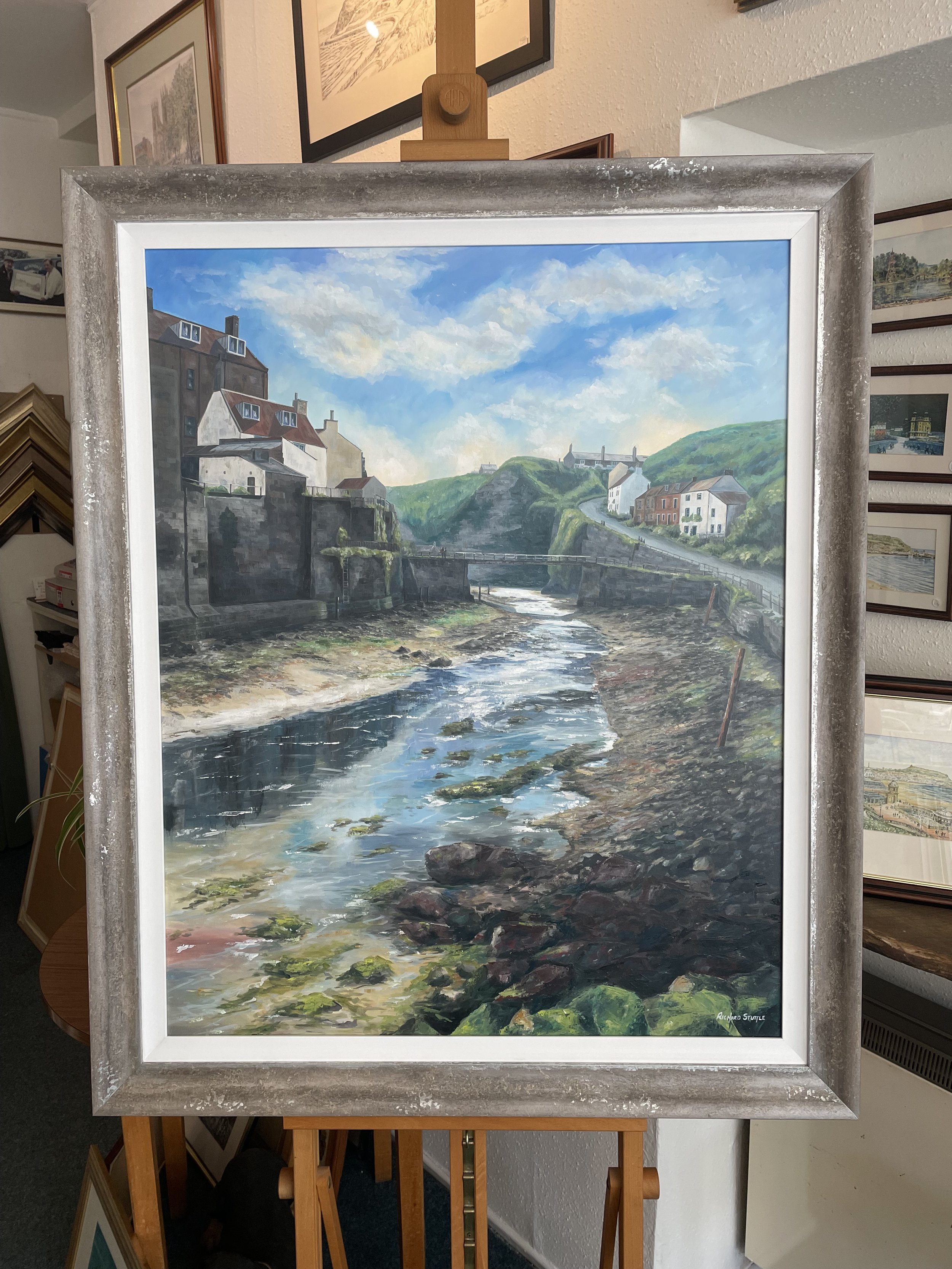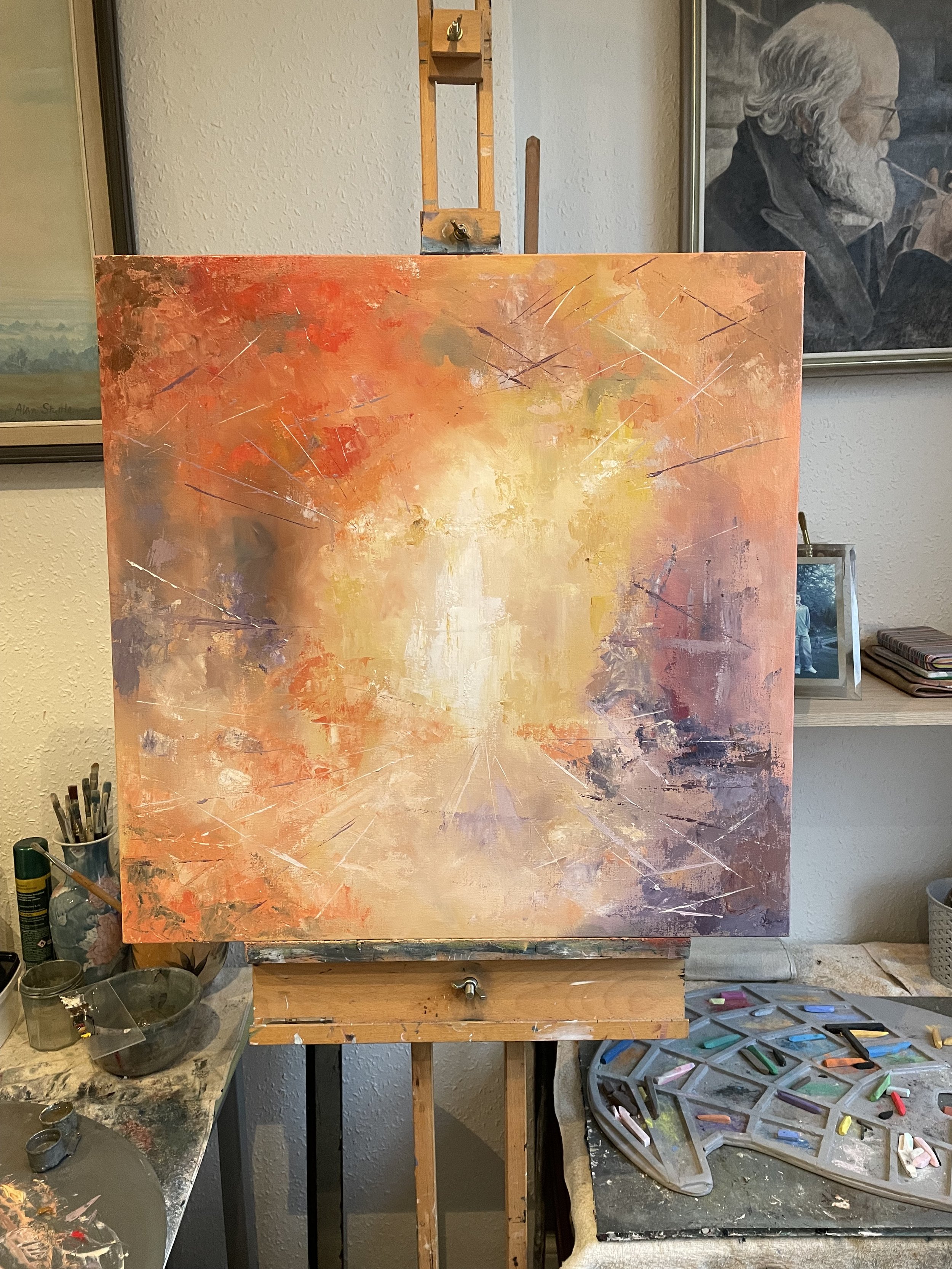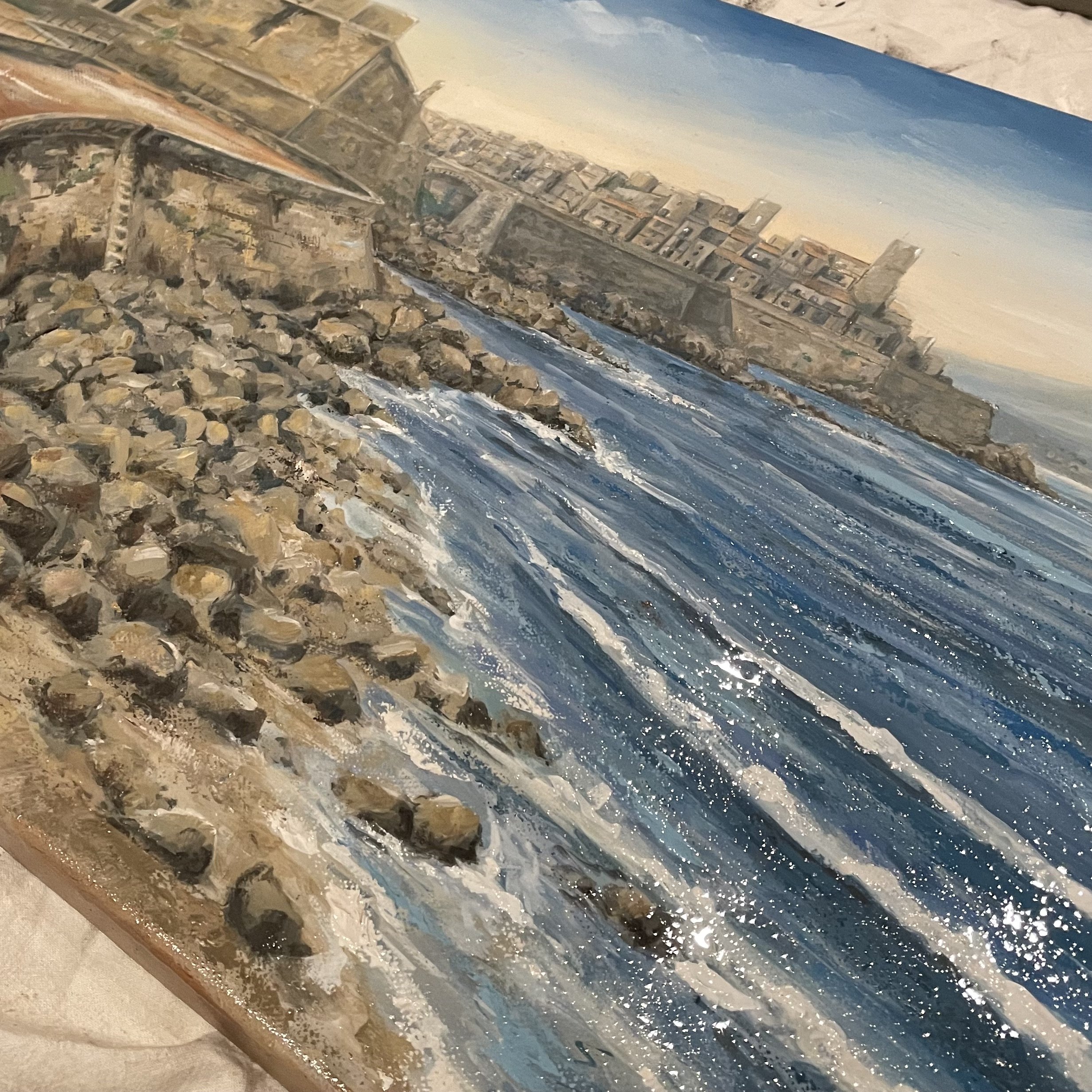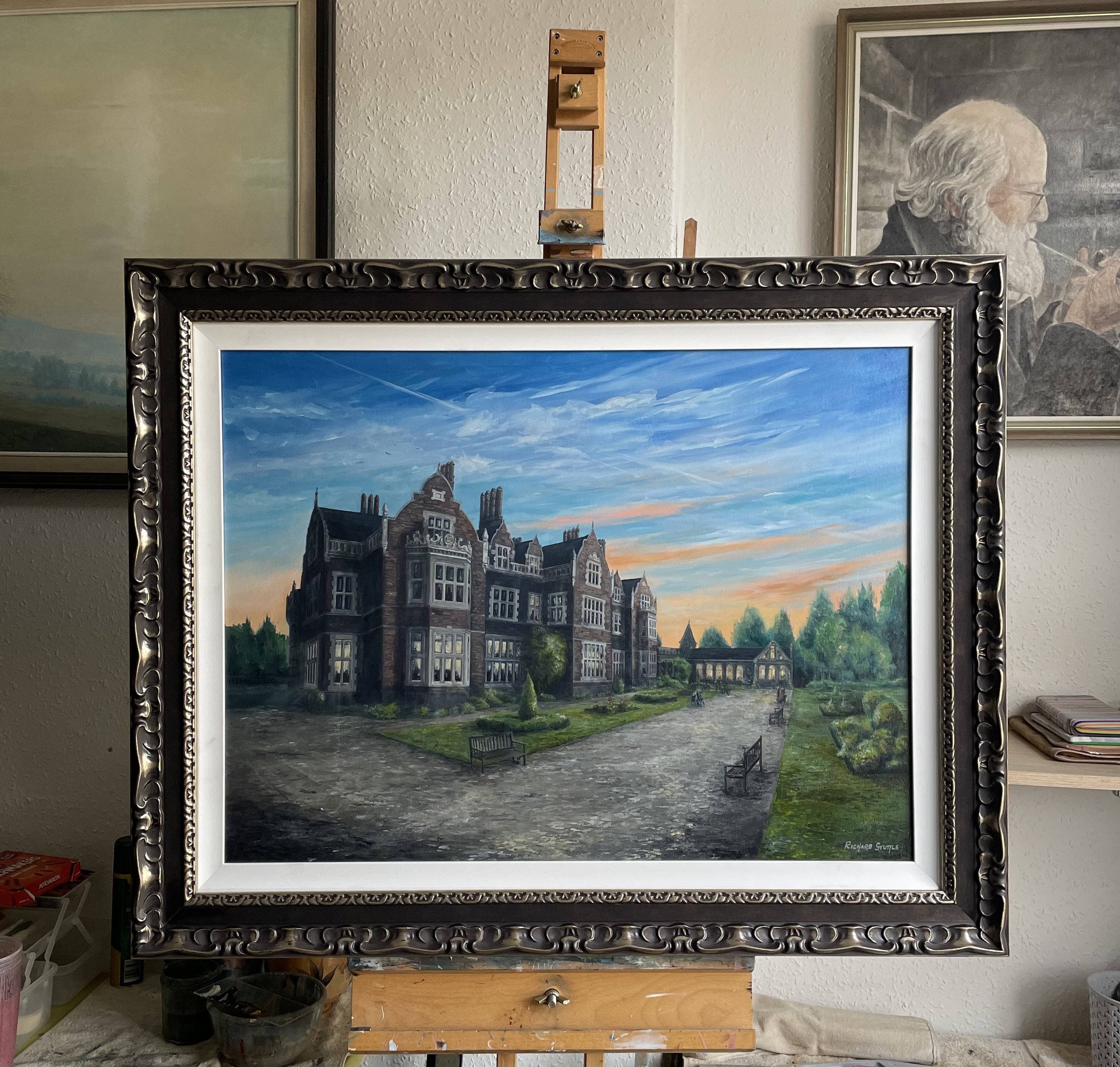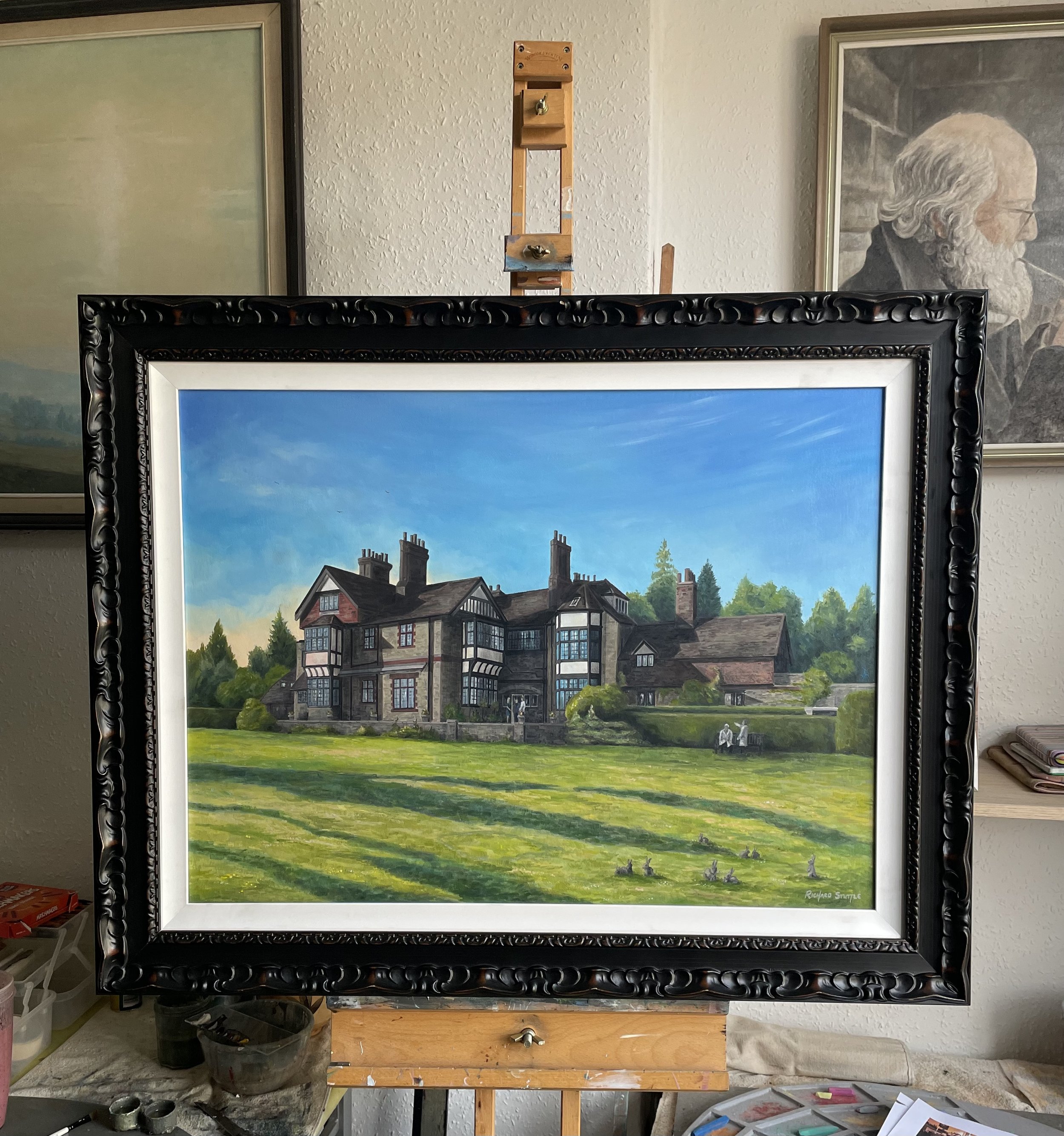ARTIST INTERVIEW: Richard Stuttle
Please can you give me an introduction about yourself
I have a great love for nature and the natural world. I have been surrounded my art since an early age, my father is a professional artist. When I left school, I trained as a chef and spent many years working in the hospitality industry. I have always painted, working as a professional artist, I have exhibited in the UK, U.S and France. I was represented by the Agora Gallery and held an exhibition in New York.
In 2002, I was one of the founding members of Caroline’s Rainbow Foundation, following the death of my sister on her gap year in Australia. The charity helps to raise awareness of the importance of travel safety. Preparing young travellers, making them aware of the risks and benefits of world travel. I wrote a book about our charity, my travels and dealing with grief. Pegasus Publishing published ‘Chasing Rainbows – the Stolen Future of Caroline Ann Stuttle’ in 2021.
Over recent years I have spent a great deal of time looking into spiritual healing, sensitivity, energy, spirit art and mediumship. I believe in life after death, and I’m interested in personal development. I have explored what information can be picked up about someone and their life through colour, art and tuning into their energy.
Your father is also an artist, has he been influential to you and your work? What has it been like growing up in a creative family?
Art has always been important to our family. I had an incredibly privileged childhood in the sense of freedom to explore my creativity. Both my mother and father knew how important it was for me to be out in nature and learning to express myself through art and drawing.
My father is a wonderful artist, and after gaining a scholarship at the RCA he went on to make a living as an artist for over 50 years. It’s not a common story for an artist, I have always been blown away by his drawing ability and skill as an artist. I am very proud of my father and what he has achieved in his life.
Although I initially turned away from art as a career, I have always been encouraged to paint. Working together in the studio, and he offers tips and advice. On sunny days we are enjoying painting out in nature, its precious time and great for us to hang out and have fun.
Describe your creative process; from start to finish of one of your works. Where do you find your inspiration?
My creative process has evolved over time. I have been very lucky in the sense of been able to work in a number of different styles. I used to sketch out the work in great detail knowing exactly how the finished work would look. Now I am much freer and allow the paint to be paint, and the canvas to evolve through inspiration of the moment.
Once I have an initial idea for a painting, I will allow the idea to germinate through a number of sketches. I usually get a vision in mind of where I would like to take the painting.
I usually paint in oils. Using pencil or charcoal, I sketch an outline on canvas. The underpainting offers a basic colour palette. Once in, I paint where each session on the painting wants to take me. Quite often adding new ideas and moving things about.
Here are a couple of timelapse videos of more traditional paintings:
Scarborough Waves https://www.youtube.com/watch?v=PL18BD1VHoI
Staithes https://www.youtube.com/watch?v=Pubr3lIUSP4
Harry Edwards Healing Sanctuary https://www.youtube.com/watch?v=NeqeP7nBTmY
The finished work is a combination of multiple sessions, I hope that my passion and feeling comes through in some way shape or form.
What is your favourite piece of work that you have created and why? What is your favourite piece of work that you have created and why?
A number of years ago, I created a series of parkour practitioners (Free runners) when I was working in London. One painting shone out a little more. An oil painting, 30” x 40”, called ‘Arm Stretch’. It was dark, he was lit only by a streetlight in a tight corridor, armed pressed against each side of the corridor holding himself upside down. I felt the finished work shone and I felt was years ahead of my work. The work was sold to a collector in California.
Arm Stretch
More recently I painted a series of oil paintings of the ‘Seven Principles of Spiritualism’. I enjoyed my process, I started with nothing more than thumb nail sketches and a few lines on the canvas. I had no idea of the finished work. It was a series of six interlinked paintings, and I worked over each canvas in sequence layer on layer. They evolved organically and I added different features from my inspiration following the brush. It opens my mind to a different process of creating a painting.
Seven Principles of Spiritualism
Who is your favourite artist and why? Do they have an influence on your work?
I would have to say JMW Turner stands out as one of the greatest painters of all time. I am blown away by his talent, accuracy, freedom, use of paint and colour. As I have researched Turner’s journey, he followed the pathway where paint, colour and feeling wanted to take him. He just painted and didn’t care what people thought. Has Turner influenced my work? Most certainly, although I am nowhere near the level of his painting ability or talent. I try to let the paint go where it needs to go, I paint with freedom, try different styles and no longer care what people think.
What is the hardest thing about creating a painting?
If I had an image in mind, I could become impatient. I wanted the art to be finished immediately. I used to have to remind myself, it’s the process of painting that is important. With more recent work, I would say once I have the concept of a piece of art, the hardest thing is removing my conscious mind and painting with complete freedom without judgement.
What is your favourite thing about your job?
Very simple, time and creativity. I have the privilege of time, sitting in silence, exploring myself and my creativity.
What do you think makes your work unique?
This is difficult to say. I try to capture the moment and an essence of true reality. I paint with feeling and try not to force the paint into something it doesn’t want to be. I have been through various styles of painting, which is not necessarily a benefit as an artist. My work might not be easily recognisable. What I would say, is that I try to tap into my nature and soul as an artist, each piece is painted from inspiration and love.
This question is an opportunity to mention a little more about spirit art. This relates to tapping into energy of people both past and present. It relies on painting what you feel and the energies you become aware of in the moment. I have spent many years working on personal development, understanding energy, spirit art and mediumship.
What has been your biggest achievement so far?
I have exhibited in London, France and was represented by a gallery and exhibited in New York. It is always amazing to sell a painting, but its far more important to have the time, freedom, and space to paint. Over the years I have not always made a living as an artist, it’s incredibly difficult. I am lucky now as don’t rely on art as a sole source of income. This takes the pressure off painting and producing saleable work. My biggest achievement within art is losing the ego, I work hard to paint what I feel, without worrying about the outcome.
Why do you think art is important in society?
Definitely. Art is really important for society. It can provoke and open conversations allowing people to share their ideas. Art is fundamental in a healthy society. It is the creative part of us reaching out for connection and innovation.
I feel it’s also worth mentioning that some art is certainly not important in society. I am speaking of art that is designed to match your sofa or the result of throwing paint on a canvas. This art has its place but doesn’t contain skill, sensitivity, or emotion. It doesn’t tap into the creativity of the artist.
People connect with themselves through painting. As we have seen in recent years, the rise of issues around mental health. There are a number of contributing factors to this rise. Art is certainly one of the solutions, giving people a gateway to access more of themselves in a safe environment.
Please tell me about Caroline’s Rainbow Foundation
I am one of the founders of Caroline’s Rainbow Foundation. A travel safety charity founded in 2002, following the tragic death of Caroline Ann Stuttle in Australia whilst she was travelling on her gap year. Caroline was my sister. Her death devastated our family, we didn’t want what happened to us happening to another family. We decided to set up Caroline’s Rainbow Foundation. A charity to help to better prepare travellers before their travels, giving them the tools to deal with challenging situations they might encounter. Raising awareness of the risks to their safety, the benefits, and pitfalls of travel. Caroline had a great passion for travel. We always encourage people to explore the world, to follow their dreams, but to do so with safety in mind.
The charity works with the Foreign, Commonwealth and Development Office (FCDO) and the education sector, to support travellers and backpackers before they embark on their travels. For more information, please visit our website. https://www.carolinesrainbowfoundation.org/
We have built a destinations specific travel and safety guide. For more information please visit. https://safertravel.org
I speak regularly to students about the importance of travel and travel safety. In 2019, I was able to take time to write a book showcasing the milestones of our charity, my travels, and dealing with long term grief. In 2021, Pegasus Publishers published ‘Chasing Rainbows – the Stolen Future of Caroline Ann Stuttle’.
Watch an interview and get your copy. 50% of the profits goes towards supporting our current ‘Safer Travel’ incentives and projects. https://www.carolinesrainbowfoundation.org/chasing-rainbows-the-stolen-future-of-caroline-ann-stuttle/


